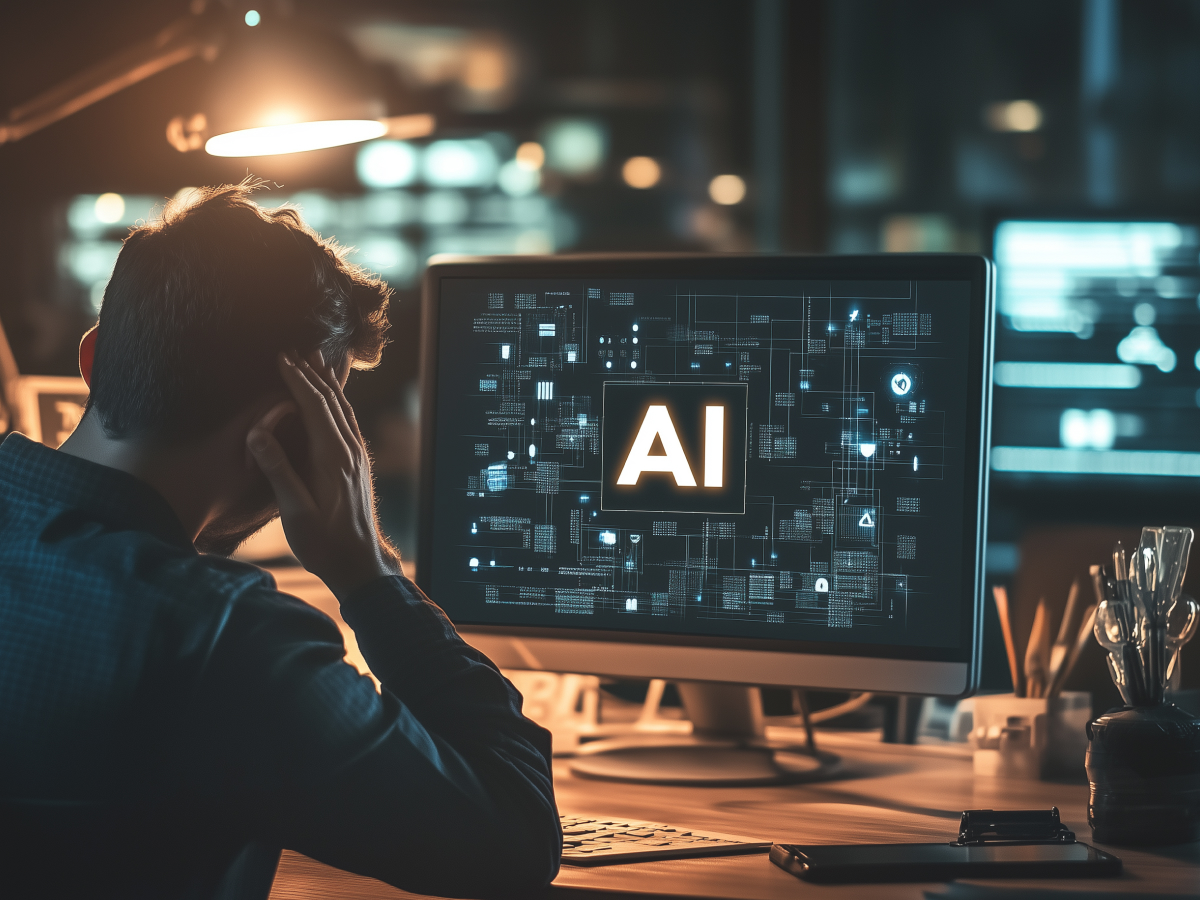AI is not yet ready to replace human professionals
There’s been a lot of noise about AI replacing humans. It’s exaggerated, at least for now. Yes, AI is improving fast. But no, it hasn’t reached the bar we need for most knowledge-based roles. Take finance, for example. AI can surface relevant market data, generate reports, and prep advisors with insight before a client call. Great. Saves time. But when it comes to managing emotions, handling high-stakes conversations, or providing long-term investment guidance, AI still falls short.
Vijay Karunamurthy, Field CTO at Scale, put it well: even today’s most advanced models don’t measure up to key human attributes. They can’t replicate creativity. They can’t understand emotional nuance. And they struggle with subjective decision-making, things professionals across finance, medicine, law, and other sectors handle every day without a script.
Scale actually ran a series of benchmarks across various sectors to test exactly this. They looked at how well AI performed against experienced humans in real-world conditions. In wealth management, for instance, AI wasn’t able to give effective retirement advice under stress. The missing piece? Empathy. The ability to understand both numbers and people. That’s a big deal in any professional client-facing work.
So here’s what matters for decision-makers: AI is useful, but it’s not a replacement. It’s a support system. Use it to accelerate workflows, reduce time spent on repetitive tasks, and give your teams better data. But don’t expect it to replicate expert-level reasoning, emotional depth, or creativity. Not yet.
Combining AI with human expertise improves overall performance
The real value of AI today isn’t in replacement, it’s in amplification. People working with AI get more done, with better outcomes. In medicine, AI tools help doctors by synthesizing patient histories quickly. That’s time saved. What follows is better conversation, faster diagnosis, better care. The AI doesn’t replace the doctor, it clears the noise so the doctor can focus on the signal.
Legal teams are seeing this too. With tools like Harvey, a legal AI assistant, lawyers sort through large volumes of material faster. It eliminates long hours of basic review. That frees them up for the tough calls—strategy, negotiation, litigation. Core work that still needs a thinking human.
What decision-makers need to understand here is simple: teams that work with AI outperform those that don’t, not because the AI can think better, but because it can handle the overhead. The result is elevated human performance. Professionals become faster, more focused, and more precise.
Also, this isn’t just theory. Scale’s data shows real business upside. Financial advisors who were supported with AI before client calls saw a measurable increase in customer satisfaction scores. So, while the AI didn’t speak to the client, it made the human better at doing it. That’s our current edge, augment the human, not replace.
The message is clear: target AI deployments where it makes teams sharper. Invest in orchestration. Use AI as backend muscle, and let your best people lead the front.
Routine customer service functions are poised for AI-driven transformation
Not all roles are created equal when it comes to AI. While high-skill, judgment-intensive jobs are safe, for now, repetitive customer support roles are already under real pressure. AI systems can handle predictable interactions with consistency, speed, and 24/7 availability. When someone calls a support line and waits on hold for 10–20 minutes, that creates friction. If an AI system answers the same questions instantly, customer satisfaction surges.
Vijay Karunamurthy, Field CTO at Scale, pointed this out directly: in environments like call centers, AI performs measurably better in many low-complexity cases. The benefit is faster service and in better customer experience numbers. Many companies are already seeing “customer satisfaction scores go through the roof” by replacing long wait times with AI-powered service that delivers immediate results.
For executives, the implication is straightforward. These are functions where AI offers quick wins. It lowers cost, scales instantly, and directly impacts user perception. But it also changes the shape of your workforce. If you’re running a large support operation, the shift is structural. You’ll need fewer agents. The ones you keep should be capable of handling the more difficult edge cases, where a scripted response won’t cut it.
The opportunity is high-value, but it requires leadership. You’ll need to rethink how you organize customer-facing teams, retrain remaining staff, and monitor system outputs closely to keep quality in check. That’s where smart implementation matters. Use AI where it’s clearly outperforming and free your teams to take on the harder problems humans still solve best.
Rapid AI advancements remain short of expert-level performance
AI is improving quickly. That’s clear. But reaching the level of trained experts in complex decision-making is still out of reach. Scale partnered with the Center for AI Safety to run a serious benchmark: “Humanity’s Last Exam.” It’s a test made up of 2,700 hard questions submitted by more than 1,000 researchers, professors, and advanced-degree holders, across disciplines. Current top-tier AI models are only able to answer about 20% of them correctly. That number used to be just 10% a few months ago. So the progress is real, but the gap is still huge.
This matters. If you’re leading an organization, you need to know when AI is ready to make decisions, and when it isn’t. Success in controlled environments doesn’t yet hold up in complex, dynamic scenarios where deep understanding is required. That includes legal reasoning, multi-layered problem solving, nuanced communication, and context-rich tasks.
AI isn’t replacing expert-level thinking. Not in law, not in medicine, not in fields where humans adapt, interpret, and improvise in real time. What AI can do is offer support, give direction, flag data. What it can’t do, at least today, is take over complete responsibility in expert scenarios.
Here’s what smart leadership means in this phase: monitor the pace of change closely, but don’t overestimate the present. Maintain human oversight on your most complex decisions. Use AI to train, assist, and accelerate—not to assume full control unless the outcomes are low-risk. As advancement continues, the line may shift, and when it does, move fast. But don’t move blind. Know where the edge really is.
Key takeaways for decision-makers
- AI won’t replace skilled professionals, yet: Leaders should focus on deploying AI to support high-performing teams, not replace them. Current AI lacks emotional intelligence, creativity, and nuanced judgment essential in fields like finance, law, and medicine.
- Human-AI collaboration boosts output: Executive teams should invest in AI tools that enhance professional workflows. When AI preps or assists workers, especially in data-heavy environments, performance and customer satisfaction consistently improve.
- Routine CX functions are ripe for automation: Decision-makers can achieve immediate efficiency gains by automating low-complexity customer service tasks. Redeploy human agents to handle complex cases requiring empathy and critical thinking.
- AI progress is fast but incomplete: Leaders should monitor evolving capabilities but maintain human oversight for high-impact decisions. While top models can now pass only 20% of expert-level benchmarks, that number is rising quickly, making strategic planning essential.




